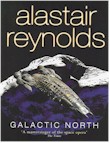
No painter created claustrophobia quite like Nicholas Evans. His overcrowded canvases depict peasant folk (usually miners) imprisoned by the dimensions of his paintings. Typically the fore, middle and background of his works are concertina-ed, squeezing yet more space from his scenes. His use of monochrome - usually black or blue - accentuates still further a lack of breathing space.
Remarkably Evans, from Aberdare, only started painting seriously when he was 70-years-old. Completely self-taught he used bare fingers and a rag to work oil into canvas. Critics saw similarities in his art to early Van Gogh - the media in the late '70s predictably dubbing him 'the Welsh Van Gogh'.
A strong religious sense pervades his art. Evans became an Evangelist with the Pentecostal movement when he was just 16-years-old after the traumatic death of his father in a mining accident. He is said to have prayed before painting and described the creative process itself as an act of worship.
The
Sin Eater (see b/w pic) is one of his more overtly religious paintings although the subject itself comes from folklore. Sin Eaters were social outcasts summoned to the house of the dead to perform a morbid but valued custom. Bread would be placed on the chest of the deceased so that the Sin Eater could consume the meal and thereby symbolically absorb their sins. For this service the Sin Eater would be handsomely paid.
Evans'
Sin Eater is a clever and rather perverse painting. He has taken the
Adoration of the Magi as his basic model and made it pagan and Welsh. Thus the Sin Eater (he's the one holding a staff on which is perched a raven) and his two associates (one carries a bell to summon the people to the ceremony; the other a lamp to light their way) replace the traditional 3 kings and their gifts. The corpse in the coffin is a rather sinister Jesus in his manger. Shepherds are substituted by peasants in traditional Welsh stove hats. If you look closely you can see that it is Welsh cakes and not bread that the Sin Eater partakes of.
His protagonists are more or less uniform in appearance, sharing the same suffering faces and skeletal bodies. The only sign of beauty in this bleak work is a tiny flower placed inside the coffin by a child.
Most of Evans' other paintings depict the miserable lot of miners. Although he viewed the Welsh miner as a heroic figure he never romaticized the worker as for example Social Realists do. More often than not they are dehumanised by industry and the mine itself becomes a kind of hell. Visual echoes of the Aberfan disaster and Nazi concentration camps manifest themselves too.
Critics have cited Van Gogh and William Blake as Evans' artistic antecedents but to my eyes his work has more in common with the German Expressionists, particularly the apocalyptic paintings of Meidner. In terms of twentieth century Welsh popular culture Evans' art is yet another example of the gothic - that most varied but dominant strain in our culture.
Evans died in 2004. For a good insight into his art track down
Symphonies in Black (1987) published by Y Lolfa which features examples of his work and text by his daughter.








